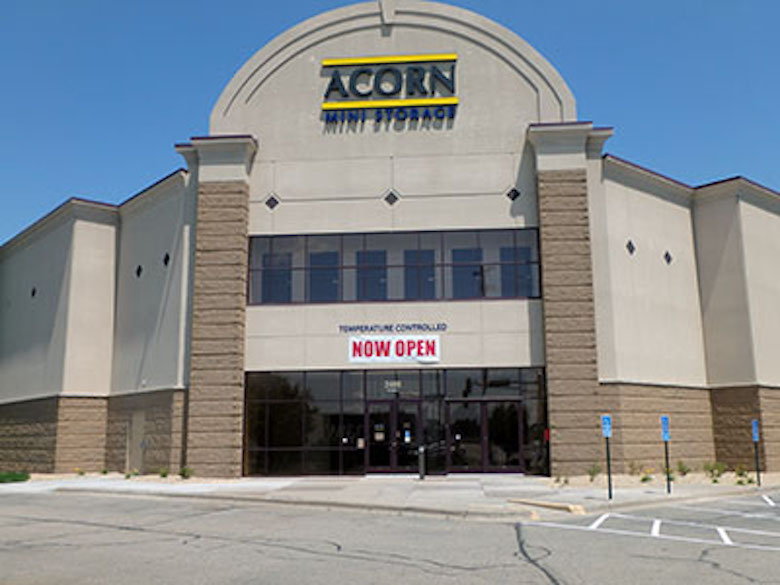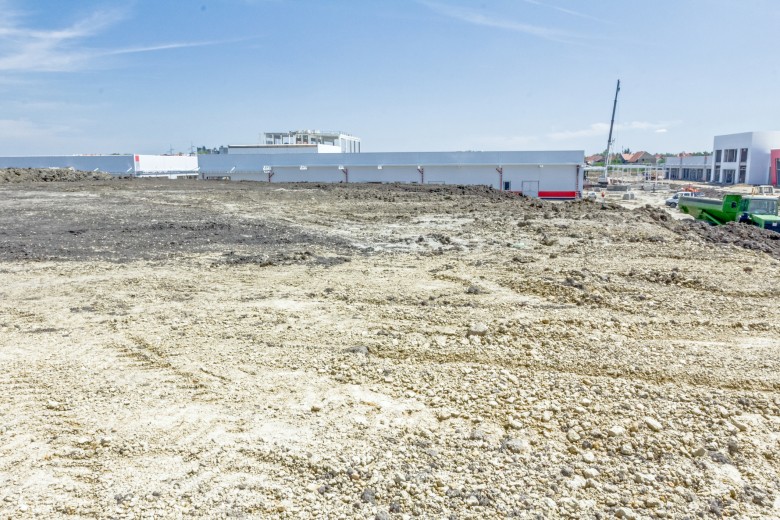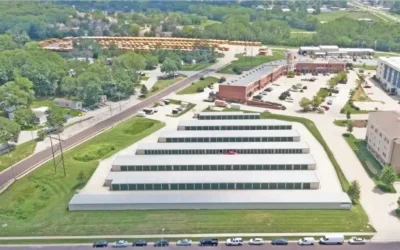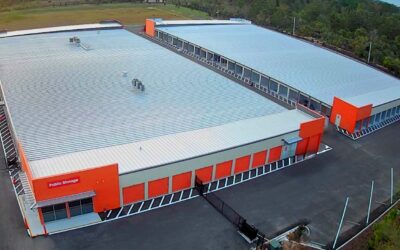As more and more retailers find themselves retreating from brick-and-mortar spaces, self-storage developers are seizing the opportunity to build facilities in prime locations.
Supermarkets, office supply, discounters and furniture stores are just a few of the empty big box stores that are getting a second chance as self-storage facilities. Meanwhile developers are bidding up prices on lots traditionally targeted towards apartment and hotel developers.
In the past, self-storage developers have not given those locations much of a second glance, because they haven’t been able to pay the higher prices that retail space typically commands. These days, self-storage is chasing – and winning – retail sites that bring them ever closer to a dense customer base.
Economic shifts
Two notable shifts have helped clear the runway to buy existing retail property for conversions or in-fill sites for new development. First, e-commerce has changed the retail landscape and thinned the herd of potential retailers willing to backfill an empty big box space or acquire land to build new stores. Second, rising rents at storage properties has given storage developers a bigger appetite – and more buying power – to acquire prime retail property.
“What has really happened is that as rents in certain markets have increased, that has given developers a greater opportunity to take a look at more expensive locations and conversions,” said Todd Amsdell, president and CEO of Cleveland-based Amsdell Companies.
That is true not just of vacant retail space, but also other vacant commercial space such as warehouse or even office space, he adds. Amsdell Companies has been doing conversions of big box retail stores, small shopping centers and car dealerships since the late 1980s. The company currently owns 72 properties operated as Compass Self Storage.
Location, location, location
Traditional retail locations are highly desirable for storage operators, as they often come with great demographics, access and visibility. Those were all key factors that helped convince Oak Management & Development Company to purchase a vacant HOM furniture store in the Minneapolis suburb of Roseville last year. The store overlooks Interstate 35 and has an estimated 100,000 cars passing that location each day.
Oak Management is converting the 85,000-square-foot furniture store to a 65,000 square foot storage facility. The company converted the first floor last summer, and will buildout the second floor once the first phase is nearly fully leased.

Oak Management converted the former HOM furniture store in Minneapolis into a self-storage facility.
“It has been leasing up quicker than we had anticipated. It has been a great location for us and I think it will continue to be,” said Chris Kirwan, director of development at Oak Management & Development Company in Minneapolis. The firm operates 13 Acorn Mini Storage properties in the Minneapolis-St. Paul metro with nearly 1 million rentable square feet.
Self-storage is proving to be an ideal alternative use for a growing inventory of empty big box retail stores. For example, U-Haul recently converted a former Modway Furniture Building to self-storage in Rancho Dominguez, CA. CubeSmart is on deck to manage a new 250-plus unit facility underway in Chattanooga that will take the place of a former Big Lots!
The continued shake-out and downsizing of footprints from the likes of Macy’s, Sears and Sports Authority indicate that there will be an ample supply of space still ahead.

Self-storage developers are increasingly turning their attention towards prime parcels typically marketed to retail users.
Bidding wars
It isn’t just vacant retail buildings attracting self-storage developers, but prime development sites as well.
Edward Del Beccaro, a senior managing director for Transwestern, recently represented the seller of a commercial infill site in downtown Walnut Creek, CA.
Top bidders for the site included the usual hotel and apartment players. Apartment developers in particular have been very aggressive in the upscale market – paying as much as $60 to $80 per square foot for the best sites. However, there was not one, but three storage developers also competing for the in-fill site.
Although the self-storage guys were edged out by a hotel company, each of the storage developers was willing to pay $65 per square foot. Why the exorbitant price?
Traditionally, self-storage operators in the Walnut Creek area have been content to pay $5 to $10 per square foot for land further out on the fringe of the metro. Developers would pop up a one-story cinder block facility and achieve rents of $0.60 to $0.80 per square foot.
That scenario has radically changed, Del Beccaro said. Self-storage developers are raising the bidding for in-fill sites that gets them closer to a prime customer base of both residents and businesses. Developers are penciling out deals where they can put more density onto higher priced land with vertical, multi-story buildings and also achieve higher rents of $1.50 to $2 per square foot.
One big stumbling block
One big stumbling block for storage developers is that acquiring retail real estate often requires a change of use or change of zoning. Many municipalities still classify self-storage as a light industrial and the use would not be allowed in areas zoned for retail use.
“Cities, are really, really hesitant to change the use. So, you may have a big box store that would work perfect, but nine times out of 10 the city is going to be reluctant to grant you the approvals you need to make the conversion happen,” said Kirwan.
In the case of Oak Management’s recent furniture store conversion, the city of Roseville happens to treat zoning for retail and self-storage the same.
“That is what made that deal work, because we didn’t need to do a lot of negotiating with the city,” said Kirwan.
Not always economical
“There are definitely a lot of people who see this opportunity to do conversions and are pursuing it,” said Michael Mele, senior director of the National Self Storage Group for Marcus & Millichap.
The retail box is usually well located, but it is difficult to find retail property that is big enough, or not set too far off the road. In addition, the resale price on conversions is generally not as good as new ground-up construction with higher cap rates on conversions, he adds.
“It is not as easy as it might seem, and getting the numbers to work on a conversion is difficult,” said Mele.
Mele worked with one client recently who was looking to buy a vacant grocery store. The client had a plan to create a mezzanine level, but after closer examination, the maximum rentable square footage they would have been able to get was only 52,000 square feet and the rents in the market were not that high – $11 to $12.
“At the end of the day, considering what the fixed expenses would have been, it just wouldn’t work,” said Mele.







